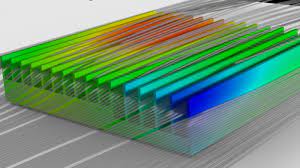
In the rapidly evolving landscape of electronic devices, optimizing performance has become an intricate dance between power, efficiency, and thermal management. The rise of compact and powerful electronics demands a meticulous approach to thermal design to ensure longevity, reliability, and sustained functionality. This comprehensive guide explores the crucial aspects of thermal design in electronics, shedding light on key strategies, emerging technologies, and best practices that engineers and designers can employ to navigate the challenging terrain of heat management.
- Understanding the Importance of Thermal Design:
To embark on the journey of optimizing performance, it is essential to first grasp the significance of thermal design in electronic devices. Heat is an inevitable byproduct of electronic components operating at various power levels. Excessive heat can lead to reduced performance, accelerated wear and tear, and even catastrophic failure. Thermal design aims to strike a delicate balance between extracting and dissipating heat to maintain optimal operating conditions.
- Fundamentals of Thermal Management:
Delving into the fundamentals, this section explores the basic principles of thermal management. Concepts such as conduction, convection, and radiation are explained in the context of electronic devices. The role of materials with high thermal conductivity, such as heat sinks and thermal pads, is discussed, providing a foundation for the subsequent exploration of advanced thermal design strategies.
- Strategies for Efficient Heat Dissipation:
Efficient heat dissipation is a cornerstone of successful thermal design. This section delves into various strategies employed to dissipate heat effectively, including the use of heat sinks, fans, liquid cooling systems, and phase-change materials. Real-world examples and case studies highlight successful implementations of these strategies in different electronic devices, from laptops to high-performance servers.
- Thermal Simulation and Modeling:
Advancements in computational tools have revolutionized the way engineers approach thermal design. Thermal simulation and modeling allow for a virtual exploration of different design scenarios, enabling engineers to predict and optimize thermal performance before physical prototypes are built. This section provides an in-depth look at the tools and methodologies used in thermal simulation, emphasizing their role in achieving efficient and effective thermal solutions.
- Emerging Technologies in Thermal Design:
As technology advances, so do the tools and techniques available for thermal design. This section explores cutting-edge technologies, such as advanced thermal interface materials, phase-change cooling, and microfluidic systems. These innovations offer new avenues for optimizing thermal performance in electronic devices, pushing the boundaries of what is possible in heat management.
- Challenges and Solutions in Thermal Design:
The road to optimal thermal design is not without its challenges. This section addresses common issues faced by designers, such as thermal bottlenecks, uneven heat distribution, and space constraints. Practical solutions and workarounds are discussed, providing valuable insights for engineers grappling with the complexities of thermal design in real-world scenarios.
- Best Practices for Thermal Design:
Drawing from industry expertise and experience, this section compiles a set of best practices for thermal design. From proper component placement and effective airflow management to regular maintenance and monitoring, these practices serve as a guide for engineers aiming to achieve peak thermal performance and reliability in their electronic devices.
- Case Studies: Success Stories in Thermal Design:
Highlighting success stories from different industries, this section showcases real-world examples where meticulous thermal design has led to significant performance enhancements and increased product lifespan. Case studies cover a range of applications, from consumer electronics to industrial machinery, providing inspiration and practical insights for designers and engineers.
- The Future of Thermal Design:
The concluding section explores the evolving landscape of thermal design in electronics. As electronic devices continue to push the boundaries of performance, new challenges and opportunities emerge. Topics such as the integration of artificial intelligence in thermal management, sustainable cooling solutions, and the impact of emerging technologies on future thermal design trends are discussed.
Conclusion:
In the quest to optimize performance in electronic devices, thermal design emerges as a critical and dynamic field. This comprehensive guide has navigated through the fundamental principles, advanced strategies, emerging technologies, and real-world applications of thermal design. By understanding and implementing the principles outlined in this guide, engineers and designers can elevate their approach to thermal management, ensuring the longevity, reliability, and peak performance of the electronic devices that power our interconnected world.

No comments yet